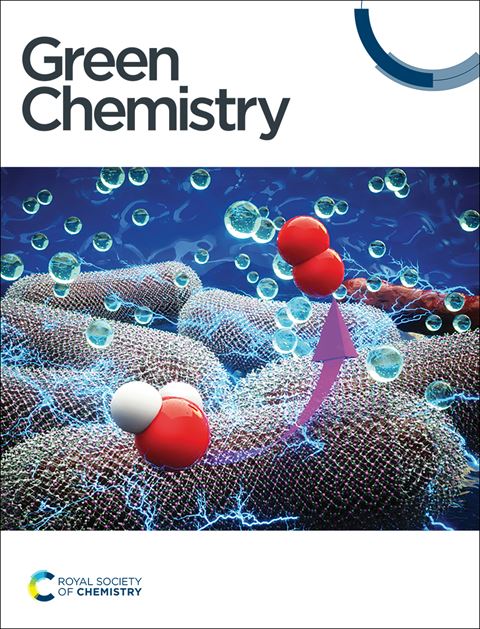Ice-confined synthesis of lecithin-protected perovskite microcrystals for stable optical synapses†
IF 9.3
1区 化学
Q1 CHEMISTRY, MULTIDISCIPLINARY
引用次数: 0
Abstract
Perovskite microcrystals (PeMCs) show great potential for creating artificial optical synapses due to their low trap state density, high carrier mobility and high thermal stability. However, it is still a challenge to develop a green manufacturing process for preparing stable PeMCs. Here, we present a facile ice-confined strategy for achieving high-quality CsPbBr3 PeMCs in pure water. In this method, lecithin protected PeMCs exhibited remarkable stability in polar solvents (water, ethanol, and acetone), which is due to the strong binding between lecithin and lead ions of PeMCs. Moreover, artificial optical synaptic transistors based on CsPbBr3 PeMCs were successfully prepared. The devices successfully simulated visual functions by modeling important synaptic features such as excitatory postsynaptic currents, paired-pulse facilitation, spiking-rate-dependent plasticity, spiking-number-dependent plasticity and short-term memory to long-term memory transition. This work provides a new avenue for the synthesis of stable PeMCs and presents a new strategy for developing highly efficient artificial optical synaptic transistors.

求助全文
约1分钟内获得全文
求助全文
来源期刊

Green Chemistry
化学-化学综合
CiteScore
16.10
自引率
7.10%
发文量
677
审稿时长
1.4 months
期刊介绍:
Green Chemistry is a journal that provides a unique forum for the publication of innovative research on the development of alternative green and sustainable technologies. The scope of Green Chemistry is based on the definition proposed by Anastas and Warner (Green Chemistry: Theory and Practice, P T Anastas and J C Warner, Oxford University Press, Oxford, 1998), which defines green chemistry as the utilisation of a set of principles that reduces or eliminates the use or generation of hazardous substances in the design, manufacture and application of chemical products. Green Chemistry aims to reduce the environmental impact of the chemical enterprise by developing a technology base that is inherently non-toxic to living things and the environment. The journal welcomes submissions on all aspects of research relating to this endeavor and publishes original and significant cutting-edge research that is likely to be of wide general appeal. For a work to be published, it must present a significant advance in green chemistry, including a comparison with existing methods and a demonstration of advantages over those methods.
 求助内容:
求助内容: 应助结果提醒方式:
应助结果提醒方式:


